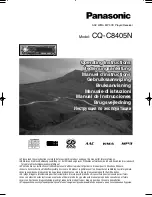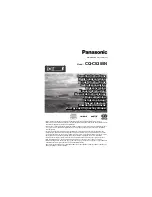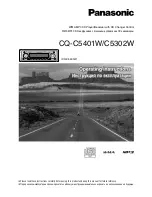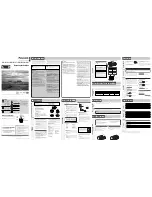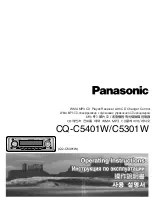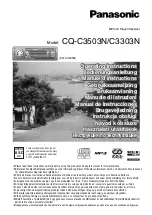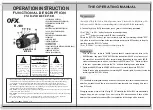RV-8 Service Manual
from the propagation delay of a gate within U7. The resultant signal
DELWE/
is the write enable for U19.
Software requirements dictate that the FLASH address space begin at 0x80000. U13 decodes out the
start address with chip select. When
CRY_A19
is high and
CRY_NVCS/
is low, pin 4 of U13 goes low.
This signal is used as the chip select for the FLASH,
CRY_FLCS/
.
Due to another bug within the CS49400, writing the FLASH must be accomplished by using GPIO20 and
GPIO21 as address pins. At the beginning of a write cycle to the FLASH, erase commands are sent to
specific addresses within the device.
GPIO[21:20]
take the place of
CRY_A[1:0]
during this phase of the
operation. During normal read operations, the GPIO pins are programmed to be always low, and
CRY_A[1:0]
are passed along to U19 via OR-gates U7. During read cycles,
DELWE/
is driven high while
the output enable signal
CRY_NVOE/
is driven low, enabling the read buffers on U19. All data transfers
are eight-bits wide, and are accomplished via data bus
CRY_D[7:0]
.
In future revisions of the CS49400 silicon, all delay and logic steering circuitry will be designed out.
Provision to remove the delay elements from the circuit is provided by R51, R52, R54, and R56.
Audio Output Port
Signals: DEC_MCKI, DEC_OUT_SCKI, DEC_OUT_FSI, DEC_SDO[3:0]
The Format Decoder outputs four I
P
2
P
S audio data streams to the AVRX FPGA,
DEC_SDO[3:0]
. These are
multiplexed to an eight channel serial interface that is in the Analog Devices SPORT mode. This eight
channel interface drives the SPORT inputs of the SHARCs. The serial bits are synchronous with
DEC_OUT_SCKI
, which is equal to 64 * FS.
DEC_OUT_FSI
is the audio output sample rate clock.
Output Port Map Table
Pin Number
Pin Name
Signal
Map
110 AUDATA0
DEC_SDO0
Left/Right
109 AUDATA1
DEC_SDO1
Center/Sub
107
AUDATA2
DEC_SDO2
Left Surround/Right Surround
106
AUDATA3
DEC_SDO3
Downmix OR Left Back/Right Back
DEC_MCKI
is the master serial bit clock for the Format Decoder, and is provided by the AVRX FPGA, as
are
DEC_OUT_SCKI
and
DEC_OUT_FSI
.
Test Pins
Signals: TEST, DBCK, DBDA, FDBDA, FDBCK
These pins are pulled up to +2.5V via RP8 for normal operation, with the exception of
TEST
, which is
pulled down. These pins are for internal testing by the manufacturer and serve no useful function to this
application.
Power Supply and Ground
Signals: +2.5VD, +3.3VD, DGND
The CS49400 operates with 3.3V I/O and a core voltage of 2.5V. There are seven core voltage pins tied
to +2.5VD by a mini-plane on the PCB and four I/O voltage pins tied to the system wide 3.3VD plane.
Diode D24 is a fast SCHOTTKY device rated with a forward current of 1A. The diode clamps the core
voltage supply pins to the I/O supply pins. This ensures that the I/O pins will track the core voltage at
power-up. Destruction of the chip could result if the I/O voltage rises faster than the core voltage. With
this topology, the 3.3VD supply will be pulled along with the 2.5VD supply if the 3.3V supply is slow in
6-28
Summary of Contents for RV-8
Page 8: ......
Page 18: ...RV 8 Service Manual 3 6 ...
Page 54: ......
Page 76: ......
Page 132: ......
Page 156: ......
Page 157: ......
Page 158: ......
Page 159: ......
Page 160: ......
Page 161: ......
Page 162: ......
Page 163: ......
Page 164: ......
Page 165: ......
Page 166: ......
Page 167: ......
Page 168: ......
Page 169: ......
Page 170: ......
Page 171: ......
Page 172: ......
Page 173: ......
Page 174: ......
Page 175: ......
Page 176: ......
Page 177: ......
Page 178: ......
Page 179: ......
Page 180: ......
Page 181: ......
Page 182: ......
Page 183: ......
Page 184: ......
Page 185: ......
Page 246: ......
Page 247: ......

